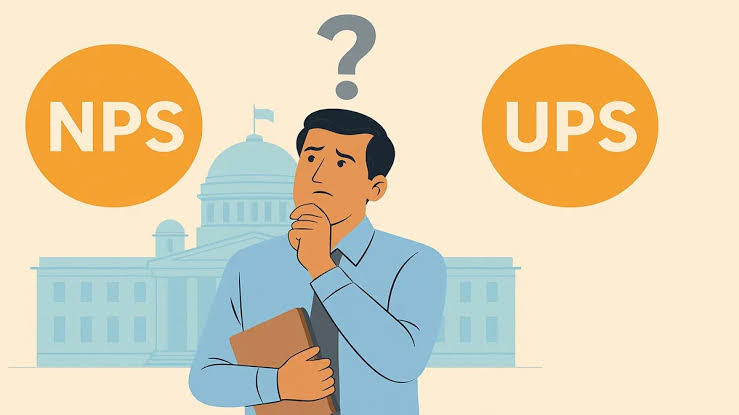The deadline to apply for the Unified Pension Scheme (UPS) has been extended from 30 June to 30 September, giving central government employees three more months to decide. The UPS came into effect from 1 April and offers a guaranteed pension, unlike the existing National Pension System (NPS), which is market-linked. Until now, all contributions were made to NPS. Choosing between the two will have a direct impact on your post-retirement life. So, should you stick with NPS or switch to UPS? Here’s a detailed comparison to help you decide wisely.
Benefits of Switching to UPS
- Guaranteed Pension:
Under UPS, after completing 25 years of service, central government employees will receive a minimum of 50% of their last salary as fixed pension along with a lump sum amount. - Higher Government Contribution:
Like NPS, employees will contribute 10% of their basic salary, but the government’s share will be 18.5%, compared to just 14% in NPS. - Inflation Protection:
The pension in UPS will be adjusted according to inflation (linked to DA), unlike NPS where there is no inflation adjustment. - Tax on UPS Pension:
The monthly pension received under UPS will be treated as taxable income. The taxation on the lump sum amount is still unclear as of now.
Why Staying with NPS Still Makes Sense
UPS may offer stability, but NPS has its own strong advantages:
- Higher Growth Potential:
NPS invests in equity markets, government bonds, and corporate debt, providing a chance to build a larger retirement corpus over time. If the markets perform well, returns can far exceed UPS pension payouts. - Great Tax Benefits:
NPS provides multiple tax-saving opportunities:- Section 80C: Up to ₹1.5 lakh deduction.
- Section 80CCD(1B): Additional ₹50,000 deduction beyond 80C.
- Section 80CCD(2): Employer’s contribution is also tax-deductible.
- Taxation on Maturity:
- On retirement, you can withdraw 60% of the corpus tax-free.
- The remaining 40% must be used to buy an annuity, which gives you regular pension (taxable based on your slab).
Also Read-: Good News for Government Employees: New Pension Rules Issued, Pension Form Submission Made Easier
Key Differences Between UPS and NPS
| Feature | UPS | NPS |
|---|---|---|
| Pension Type | Fixed and guaranteed pension | Market-linked returns, no guarantee |
| Employee Contribution | 10% of basic salary | 10% of basic salary |
| Government Share | 18.5% | 14% |
| Inflation Adjustment | Pension increases with DA | No provision for inflation adjustment |
| Minimum Service | 25 years of service required for guaranteed 50% of last salary | No such condition, pension depends on total corpus and returns |
What’s Best for You – UPS or NPS?
There’s no one-size-fits-all answer. Your decision should depend on your age, risk appetite, and financial goals.
Choose UPS If:
- You prefer security and fixed income after retirement.
- You want pension that increases with inflation.
- You’re risk-averse and uncomfortable with market fluctuations.
Stay with NPS If:
- You want higher returns and can accept some risk.
- Saving maximum tax is a key priority.
- You’re looking for flexibility in investment and the option for early retirement.
In conclusion, UPS offers peace of mind with guaranteed income, while NPS offers potential for wealth creation. Evaluate your long-term needs and choose wisely for a financially secure retirement.


